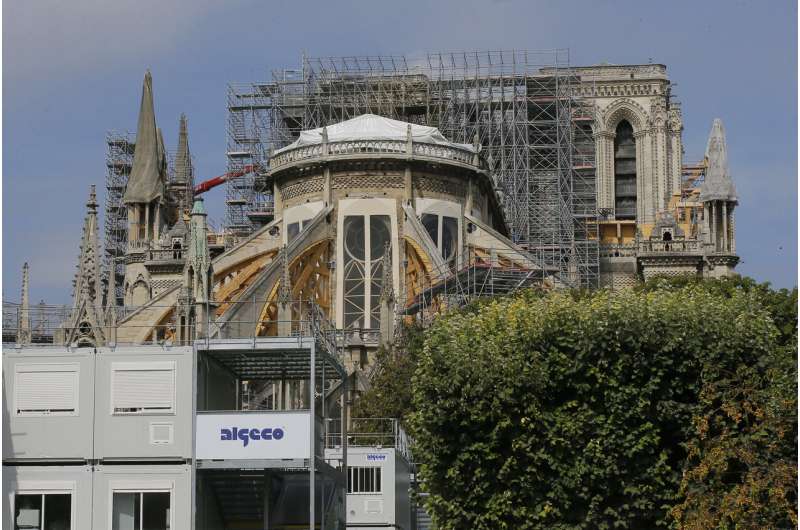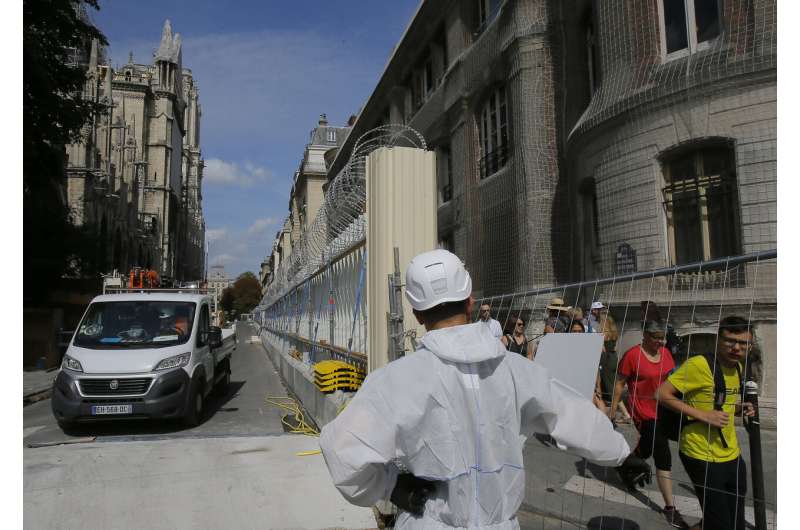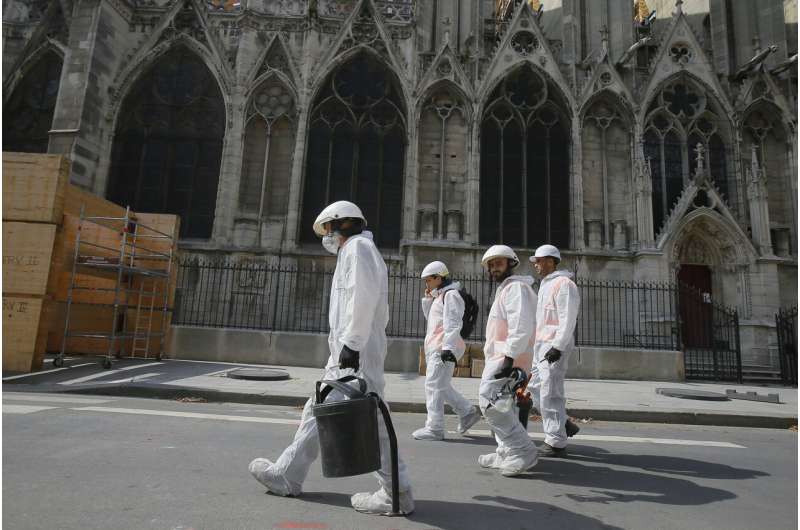Scaffolding platforms are set up at Notre Dame Cathedral, in Paris, Thursday, Aug. 1, 2019, as the preliminary work begins to repair the fire damage. (AP Photo/Michel Euler)
Cleanup work at fire-ravaged Notre Dame Cathedral will resume later this month but under stricter lead-protection rules, amid growing public concern about toxic pollution.
Under pressure from labor inspectors concerned about lead risks, the Paris region administration suspended cleanup work at the cathedral last week, and ordered new checks of schools and nurseries in the neighborhood.
The administration announced in a statement Friday that workers will be allowed back starting Aug. 12, but in smaller numbers and with tougher new decontamination measures and equipment "to prevent any release of polluting elements to the outside."
Critics say authorities didn't move fast enough to protect workers and residents when the cathedral's massive lead roof and spire melted in the April fire, spewing toxic dust into the Paris air.
A lawsuit has been filed, and a union-led collective is demanding the "total confinement" of the site.
Astronomical levels of lead were measured in the area at the time. And they remain exceptionally high at some spots inside the cathedral, and in soil of the adjacent park and forecourt, according to the Paris regional health agency. Those areas have been closed to the public since April 15 and are likely to stay that way for years.
A worker dressed in a white overalls opens the gate on the fence that surround Notre-Dame Cathedral, in Paris, Thursday, Aug. 1, 2019, as the preliminary work begins to repair the fire damage. (AP Photo/Michel Euler)
No dangerous levels have been registered, however, in nearby streets, where tourists and residents continue to circulate and souvenir shops and restaurants have reopened.
The health agency released a 109-page report last month detailing efforts to monitor lead levels among the population and in the soil and nearby buildings.
But environmental groups say authorities weren't aggressive or open enough about warning the public about lead levels at the time of the fire.
Children are especially vulnerable to health problems from lead poisoning and exposure, so authorities ordered a deep clean for neighborhood schools and recommended blood tests for children under 7 and pregnant women who live near Notre Dame.
Workers dressed in white overalls walk past the Notre Dame Cathedral, in Paris, Thursday, Aug. 1, 2019, as the preliminary work begins to repair the fire damage. Paris authorities are re-examining lead levels in and around Notre Dame cathedral amid growing public concern about possible risks to people and the environment after hundreds of tons of lead melted in the April 15 fire. Tourists have returned to the neighborhood in central Paris but the immediate area around the cathedral remains closed for cleanup and reconstruction. (AP Photo/Michel Euler)
The new security measures for the cathedral will limit the number of workers allowed inside at any time to 30-40 instead of the 60-70 currently allowed, at least until new decontamination kits are delivered in the autumn when the pace of work is expected to pick up.
The main focus is "to ensure that the work doesn't generate any pollution outside the work zone," the statement said.
© 2019 The Associated Press. All rights reserved.


























